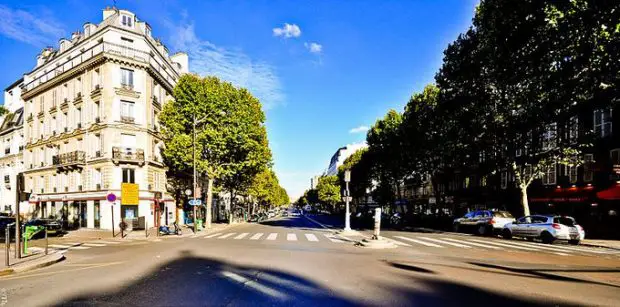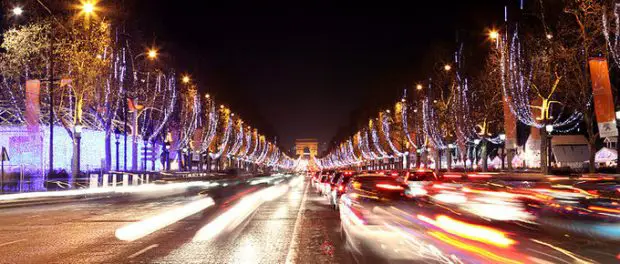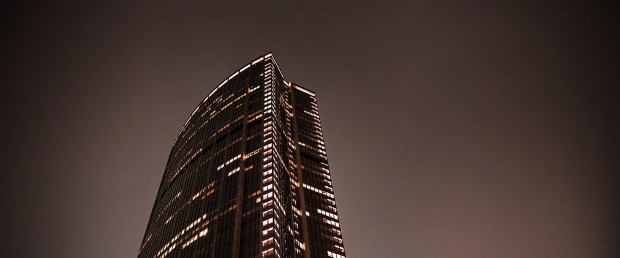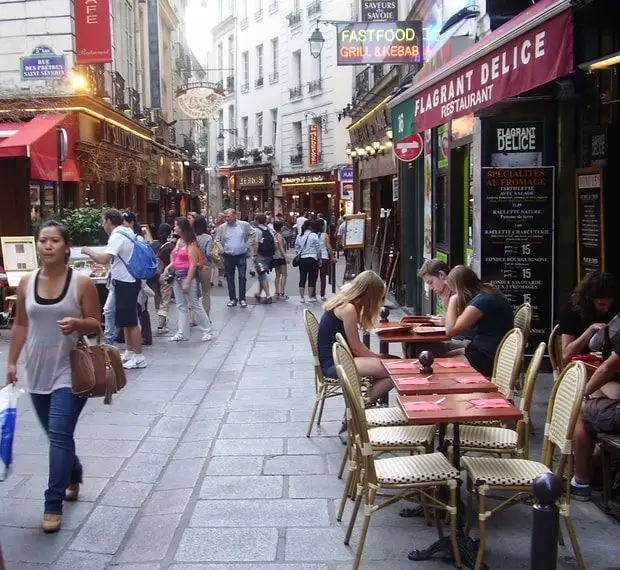Are you wondering what to see or do near the Louvre Museum? Then, allow me to suggest ideas of things to do in the surroundings to make the most of this amazing district.
If it’s your first time at the Louvre Museum, I recommend you read this guide to learn everything you need to know to plan your visit.
For those in a hurry, I recommend this guide for a quick tour of the Louvre Museum in two hours.
But first, here is an overview of what to do near the Louvre Museum:
Jardin Des Tuileries
Pl. de la Concorde, 75001 Paris
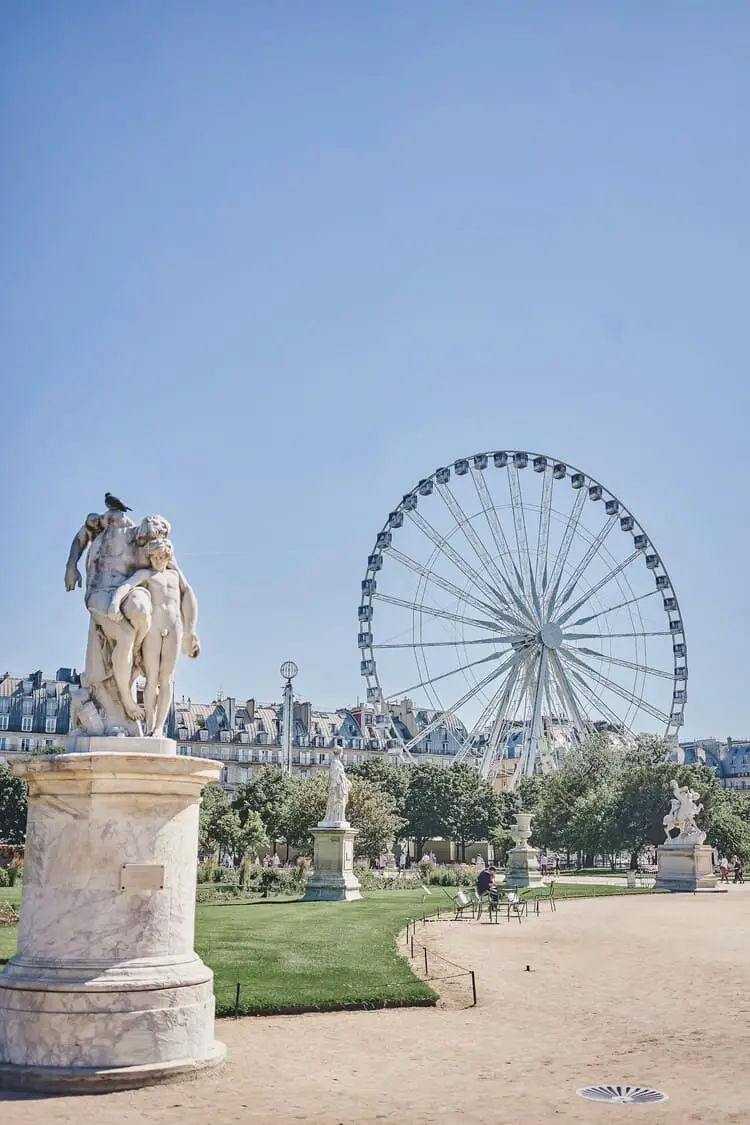
After visiting the Louvre, take a walk in this beautiful French-style garden near the famous pyramid. You can sit on free benches and chairs to relax.
Each year, fun events happen here! From December to January, enjoy the Christmas market and holiday lights. From July to August, have fun on exciting rides at the Tuileries fair.
Place de la Concorde
Place de la Concorde, 75008 Paris
Voir cette publication sur Instagram
From the Louvre, walk through the Tuileries Garden to see the famous obelisk at Place de la Concorde.
This big square is often full of cars, but it looks magical at night with beautiful lights.
Come back in the evening to enjoy the view and take amazing photos!
La Samaritaine – Department Store
9 R. de la Monnaie, 75001 Paris
Voir cette publication sur Instagram
This famous Parisian department store is just a 5-minute walk from the Louvre. Its beautiful Art Nouveau facade is a must-see!
La Samaritaine is full of luxury fashion and perfume shops. It’s also a great place to admire Parisian architecture, making it a perfect stop in the Louvre district.
The Arcades of Rue Rivoli
Rue Rivoli, 75001 Paris
Voir cette publication sur Instagram
The arcades of Rue de Rivoli have a quiet and elegant feel, mixing shopping with real Parisian charm.
It’s a great place to shop, enjoy a coffee, or take a walk near the Louvre.
Stop by the Galignani bookshop or try delicious hot chocolate at the famous Angelina tea room.
Angelina Café
Voir cette publication sur Instagram
Step into this beautiful tea salon and try the famous hot chocolate – it’s thick, creamy, and tastes like melted chocolate bars!
Pair it with a Mont-Blanc pastry, their signature dessert!
Pont des Arts

Walk across Pont des Arts, also called the “Lover’s Bridge,” to experience a true symbol of Parisian romance.
Right next to the Louvre, this bridge offers amazing views of the Seine River and the French Institute. It’s a must-see in the Louvre district and a perfect spot for photos!
Pont Neuf
Voir cette publication sur Instagram
Visit Paris’ oldest stone bridge and admire its beautiful arches decorated with carved stone faces.
This bridge connects the Right Bank to Île de la Cité, the island where you’ll find the famous Notre-Dame Cathedral. It’s a great place to enjoy history and amazing views of Paris!
Place Vendôme
Afficher cette publication sur Instagram
Take a walk near Place Vendôme to see this famous square, its luxury shops, and beautiful Parisian buildings.
This square is a symbol of French elegance and is home to one of the world’s most famous hotels – the Ritz. It’s a great place to experience Parisian luxury!
Rue Saint-Honoré
Voir cette publication sur Instagram
Rue Saint-Honoré is famous for its historic buildings and many luxury fashion boutiques.
The street is full of restaurants and cafés, making it a great spot for lunch or a snack. It’s a perfect mix of shopping, elegance, and history, making it a must-visit in Paris!
Rue Sainte-Anne (Little Tokyo)
Voir cette publication sur Instagram
This small street is a top spot for fans of real Japanese food.
It’s filled with authentic Japanese restaurants and bakeries, offering many delicious dishes and treats straight from Japan. A great place to explore and taste something new!
“Les Bouquinistes” Second-Hand Booksellers
Bords de Seine – 75004 Paris
Voir cette publication sur Instagram
Explore this amazing open-air bookshop stretching 3 km (1.8 miles) along both sides of the Seine River.
Around 100 booksellers display over 300,000 second-hand books, making it a perfect place for book lovers to browse and discover hidden treasures!
La Madeleine
The Église de la Madeleine is a beautiful church in Paris, known for its grand design and fascinating history.
Must-see:
- Its impressive temple-like shape, with tall columns that make it look like an ancient Greek or Roman building. Inside, you’ll find stunning paintings, sculptures, and a huge pipe organ.
Carrousel du Louvre – Shopping Center
99 Rue de Rivoli, 75001 Paris
Voir cette publication sur Instagram
Visit this famous Parisian mall that blends shopping with culture.
Located under the stunning inverted pyramid of the Louvre, it offers a great selection of well-known international boutiques, including luxury brands.
The Louvre Batobus Stop
Voir cette publication sur Instagram
Hop on a shuttle boat for a fun ride along the Seine and see Paris’ most beautiful sights in just a few stops!
Batobus shuttles run regularly, so you can explore at your own pace.
For example, it takes just 15 minutes to go from the Louvre stop to the Latin Quarter!
Le Village Royal
25 Rue Royale, 75008 Paris
Voir cette publication sur Instagram
How about a break from the busy streets of Paris?
Le Village Royal is a peaceful passage with luxury shops, cozy cafés, and beautiful decorations.
Stunning art installations, like floating umbrellas, make it magical!
Each season brings special events: Christmas lights in winter and colorful flowers in spring.
Galerie Véro-Dodat
9 rue Jean-Jacques Rousseau – 75001 Paris
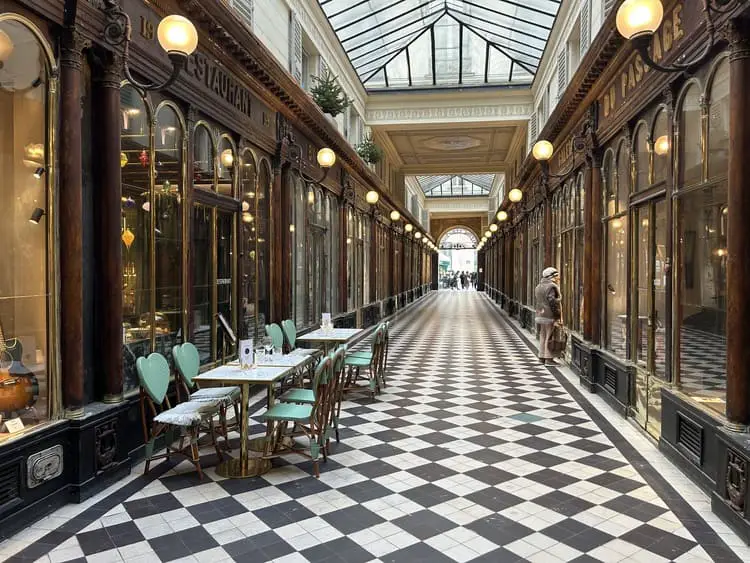
This covered passage is a must-see on Rue Montmartre. It has fashion boutiques and a few art galleries.
Its famous black and white marble tile floor gives it a unique look, making it a perfect spot for photos!
Galerie Vivienne
4 Rue des Petits Champs, 75002 Paris
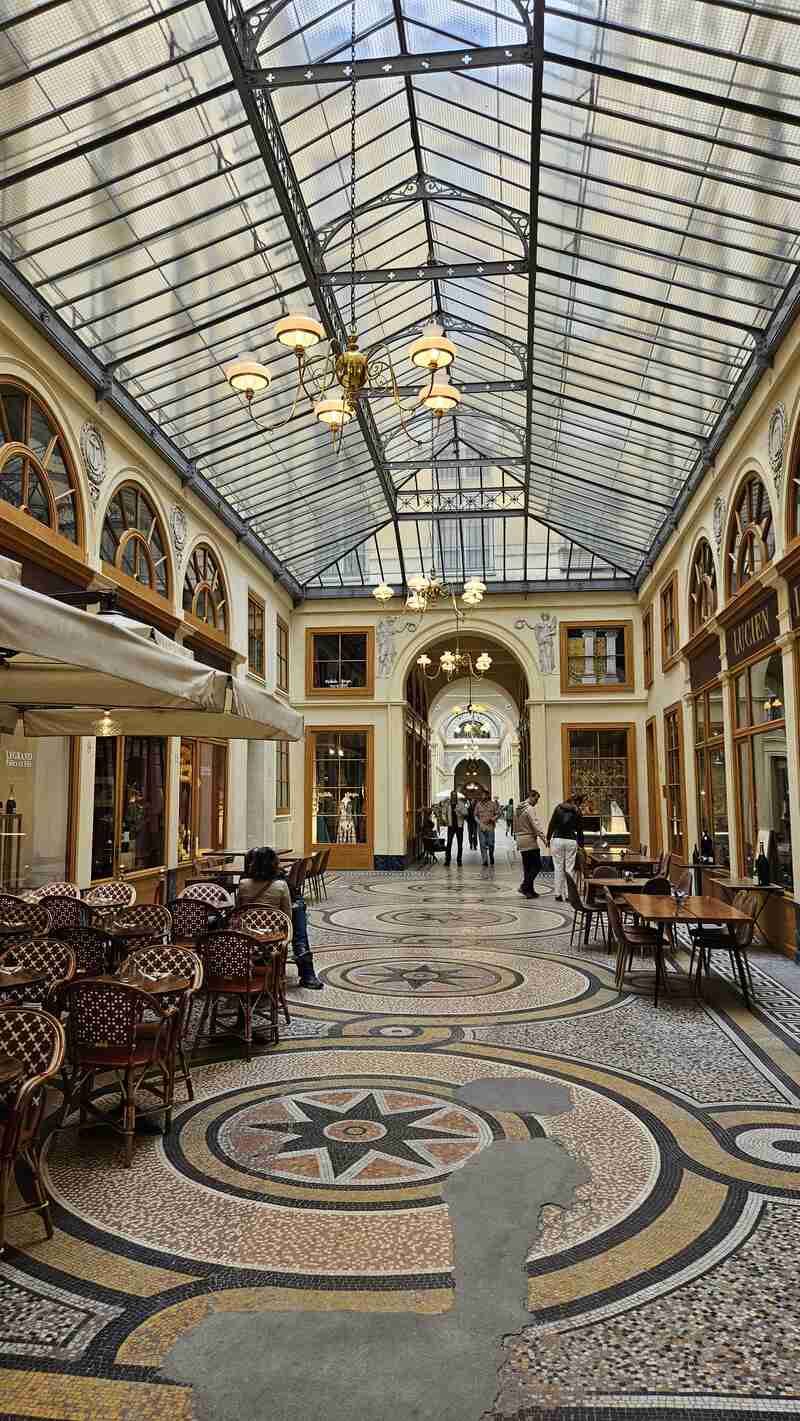
This is one of the most beautiful covered passages in Paris, with colorful mosaics, marble columns, and a sparkling glass roof.
Walk through and explore its elegant boutiques, cozy cafés, and charming restaurants. A perfect place to enjoy Parisian style!
Passage Choiseul
75002 Paris
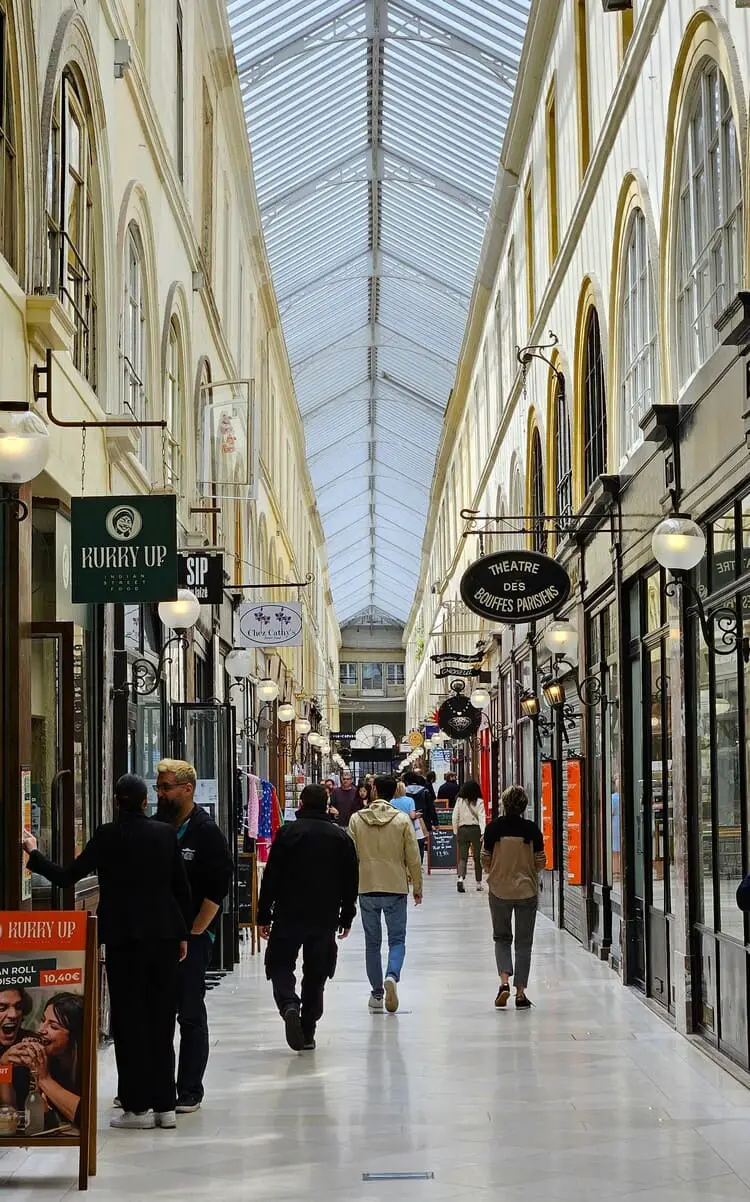
Passage Choiseul is a historic covered passage in Paris, built in the early 1800s.
It has shops, cafés, and bookstores under a bright glass roof.
Less crowded than other passages, it’s a great spot for a quiet stroll and unique finds.
Colonnes de Buren
Galerie de la Cour d’Honneur, 2 Rue de Montpensier, 75001 Paris
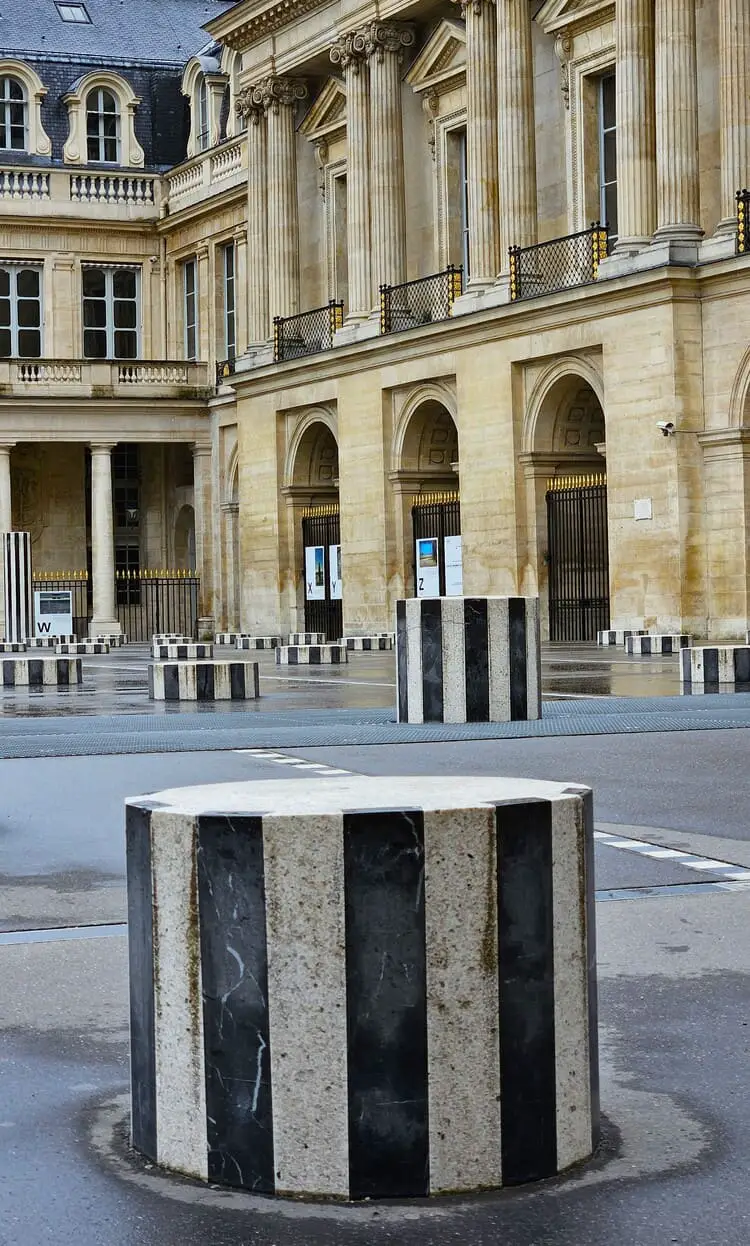
In the courtyard of the Palais Royal, you’ll find these famous black-and-white striped columns.
They’re perfect for taking fun pictures and even climbing on!
Jardin du Palais Royal
2 Gal de Montpensier, 75001 Paris
Voir cette publication sur Instagram
This garden is just a 5-minute walk from the Louvre. Walk northwest on Rue Rivoli, turn right on Rue Montpensier, and you’ll find the entrance.
Enjoy a peaceful walk under the trees, past beautiful fountains and colorful flowers.
It’s a quiet and relaxing spot right next to the Louvre!
Maxim’s
3 Rue Royale, 75008 Paris
Voir cette publication sur Instagram
One of the most famous restaurants in Paris, Maxim’s is known for its beautiful Art Nouveau design and delicious French food.
Many famous people have dined here!
Fun fact: It has been around since 1893!
Ladurée (Rue Royale)
16 Rue Royale, 75008 Paris
Voir cette publication sur Instagram
If you love sweet treats, this is the place for you!
Ladurée is famous for its colorful macarons – crispy on the outside, soft on the inside, and full of delicious flavors.
Must-try: The pistachio and raspberry macarons!
Pierre Hermé (Rue Cambon)
4 Rue Cambon, 75001 Paris
Voir cette publication sur Instagram
Another paradise for macaron lovers!
Pierre Hermé creates unique and surprising flavors, like passion fruit and chocolate.
Challenge: Can you pick just one flavor? It’s hard to choose!
Le Soufflé
36 Rue du Mont Thabor, 75001 Paris
Voir cette publication sur Instagram
This cozy restaurant is all about soufflés – light, fluffy, and super tasty!
You can try them in sweet or savory versions.
Tip: The chocolate soufflé is a must!
Restaurant Le Meurice Alain Ducasse
228 Rue de Rivoli, 75001 Paris
Voir cette publication sur Instagram
A truly luxurious restaurant where you can enjoy fine dining like a king or queen.
The setting is grand, with chandeliers and gold decorations!
Hemingway Bar
38 Rue Cambon, 75001 Paris
Voir cette publication sur Instagram
A cozy and elegant bar inside the Ritz Hotel, where the famous writer Ernest Hemingway used to spend time.
Try a fancy cocktail in this historic place!
The bartenders are some of the best in the world!
Kong
1 Rue du Pont Neuf, 75001 Paris
Voir cette publication sur Instagram
A super cool restaurant with a glass roof offering an amazing view of Paris!
The mix of modern and traditional styles makes it a unique place to visit.
Go at night when the city lights up!
Le Grand Véfour
17 Rue de Beaujolais, 75001 Paris
Voir cette publication sur Instagram
One of the oldest restaurants in Paris, where famous people like Napoleon used to eat!
The decoration is beautiful, and the food is top-notch.
Related read: 18 Oldest Restaurants in Paris That Survived Wars, Revolutions, and Time Itself

With a passion for travel and having visited over 50 countries, Dorian is eager to share his favorite spots and expert tips to help you explore Paris and France like a local.


